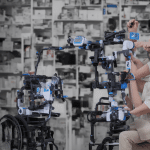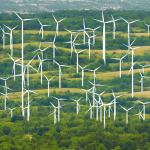In recent years, the use of drones for various applications has seen a significant surge. Amongst all applications, one segment that has piqued interest is the drone-based delivery systems. Essentially, these systems aim to utilize drones, or unmanned aerial vehicles, to carry out deliveries. They hold the potential to revolutionize the logistics and delivery services market. But what exactly are the prospects for these drone-based delivery systems, particularly in urban environments? This article will delve into this topic, providing a comprehensive analysis of the potential impact and feasibility of these systems.
The Current State of the Drone Delivery Market
Let’s start by understanding the current state of the drone delivery market. The market for delivery drones is not a futuristic concept anymore. Today, it is a burgeoning industry with a host of companies already working on and testing drone delivery systems. These companies include tech giants like Amazon and Google, which are investing heavily in drone technology.
A lire également : What Are the Future Prospects of AI in Enhancing Drone Functionality?
Additionally, the increasing customer demand for faster delivery, coupled with the advancements in drone technology and regulatory progress, are contributing to the growth of this market. The use of drones for delivery also presents an opportunity to reduce carbon emissions associated with traditional delivery methods, appealing to environmentally conscious consumers and companies.
The Role of Drones in Delivery Services
Drones, as a mode of delivery, offer several advantages over traditional methods. They are fast, efficient, and can operate independently of traffic conditions. They have the ability to travel over any terrain, making them ideal for delivering goods in congested urban areas and remote regions with poor road infrastructure.
Dans le meme genre : How Is the Drone Hobbyist Community Influencing Drone Technology?
Drones can also operate 24/7, ensuring delivery at any time of the day, increasing the efficiency and speed of services. Moreover, drones are versatile. They can carry a wide variety of packages, from small items like food and medicines to larger parcels, depending on the vehicle’s capacity.
Challenges and Limitations of Drone-Based Delivery Systems
Despite the potential benefits, drone-based delivery systems are not without their challenges and limitations. One of the main concerns is the safety of drones. The potential for accidents, collisions with other drones or structures, and malfunctions are real risks that need to be addressed.
There are also privacy concerns, as drones often come with cameras and other surveillance equipment. Additionally, there’s the issue of noise pollution. Drones are not the quietest machines, and a swarm of delivery drones could significantly increase noise levels in urban areas.
Moreover, regulatory hurdles exist. The rules and regulations governing the use of drones in many countries are still under development and often restrictive. For instance, the need for drones to remain within the operator’s line of sight significantly limits their distance capabilities.
The Future Outlook of Drone Deliveries in Urban Areas
Looking ahead, the future of drone deliveries in urban areas seems promising, albeit with a fair share of challenges. Technological advancements will continue to push the boundaries of what’s possible. For example, improvements in battery technology could extend the flight time and range of drones, making them even more practical for deliveries.
Additionally, digital mapping and GPS technology could enable precise navigation in complex urban environments. AI and machine learning could also be used to develop sophisticated collision avoidance systems, addressing safety concerns.
Furthermore, as policymakers and regulatory bodies gain more experience and understanding of drones, they’re likely to enact more favourable regulations. In fact, some cities around the world are already conducting pilot programs, testing the feasibility of drone deliveries in urban settings.
In summary, while there are indeed hurdles to overcome, the potential benefits of drone-based delivery systems in urban environments are undeniable. As technology progresses and regulations evolve, these systems could very well become a common sight in our cities in the not-so-distant future. Whether it’s delivering a pizza or a package, these sky-bound couriers might just be the next big thing in the delivery service industry. Indeed, it appears the sky is the limit for drone-based delivery systems. (1503 words)
Progress in Drone Technology and Market Growth
In the world of drone delivery, technological advancements are making a significant impact. Many companies are investing in research and development to improve drone technology, thus enhancing their efficiency and delivery distance. Improvements in battery life, payload capacity, autonomous navigation systems, and obstacle detection are among the key areas of focus. These advancements have made drones more capable and reliable, thus boosting their adoption in the delivery services sector.
Global market research indicates a steady increase in the market share for drone-based delivery systems. A study published on Google Scholar forecasts a CAGR (Compound Annual Growth Rate) of around 15% in the global market for drone deliveries over the next five years. This growth is driven by factors such as increased consumer demand for rapid delivery, the need for contactless delivery due to the COVID-19 pandemic, and advancements in drone technology.
However, it’s crucial to recognize that the market growth of drone-based delivery systems also depends on regulatory approval. Many countries are still in the process of creating laws and regulations that will govern the usage of delivery drones in their airspace. As these regulations evolve, so will the market share of drone-based delivery systems.
Addressing the Vehicle Routing Problem
One of the major challenges for drone-based delivery systems in urban environments is the vehicle routing problem. This term refers to the challenge of planning the optimal delivery routes for drones, considering various factors like delivery distance, traffic, obstacles, and battery life.
Solving the vehicle routing problem requires sophisticated algorithms and real-time data. Fortunately, advancements in AI and machine learning are making it easier to address this issue. For example, some companies are now leveraging machine learning algorithms to predict optimal delivery routes based on past delivery data and live traffic updates.
Moreover, digital mapping and GPS technology have also come a long way in aiding the navigation of delivery drones. High-definition 3D maps can help drones navigate complex urban terrain effectively, reducing the chance of collisions and ensuring timely deliveries.
Conclusion
In conclusion, the prospects for drone-based delivery systems in urban environments look promising, despite the challenges. Technological advancements have come a long way in improving the efficiency, delivery distance, and reliability of delivery drones. The growing market share of drone-based delivery systems indicates a positive trend in its adoption.
However, to fully realize the potential of drone deliveries, issues such as safety, privacy, noise pollution, and the vehicle routing problem need to be effectively addressed. Furthermore, progressive regulatory frameworks that support the growth and operation of drone-based delivery services are also crucial.
As technology continues to evolve and regulations become more favourable, drone-based delivery systems could very well revolutionize the delivery service industry. Whether it reduces delivery time, increases market growth, or reduces the carbon footprint of traditional delivery methods, the impact of drone deliveries in our daily lives could be significant. The future of delivery drones may still have its challenges, but the potential benefits make it a trend worth watching.











